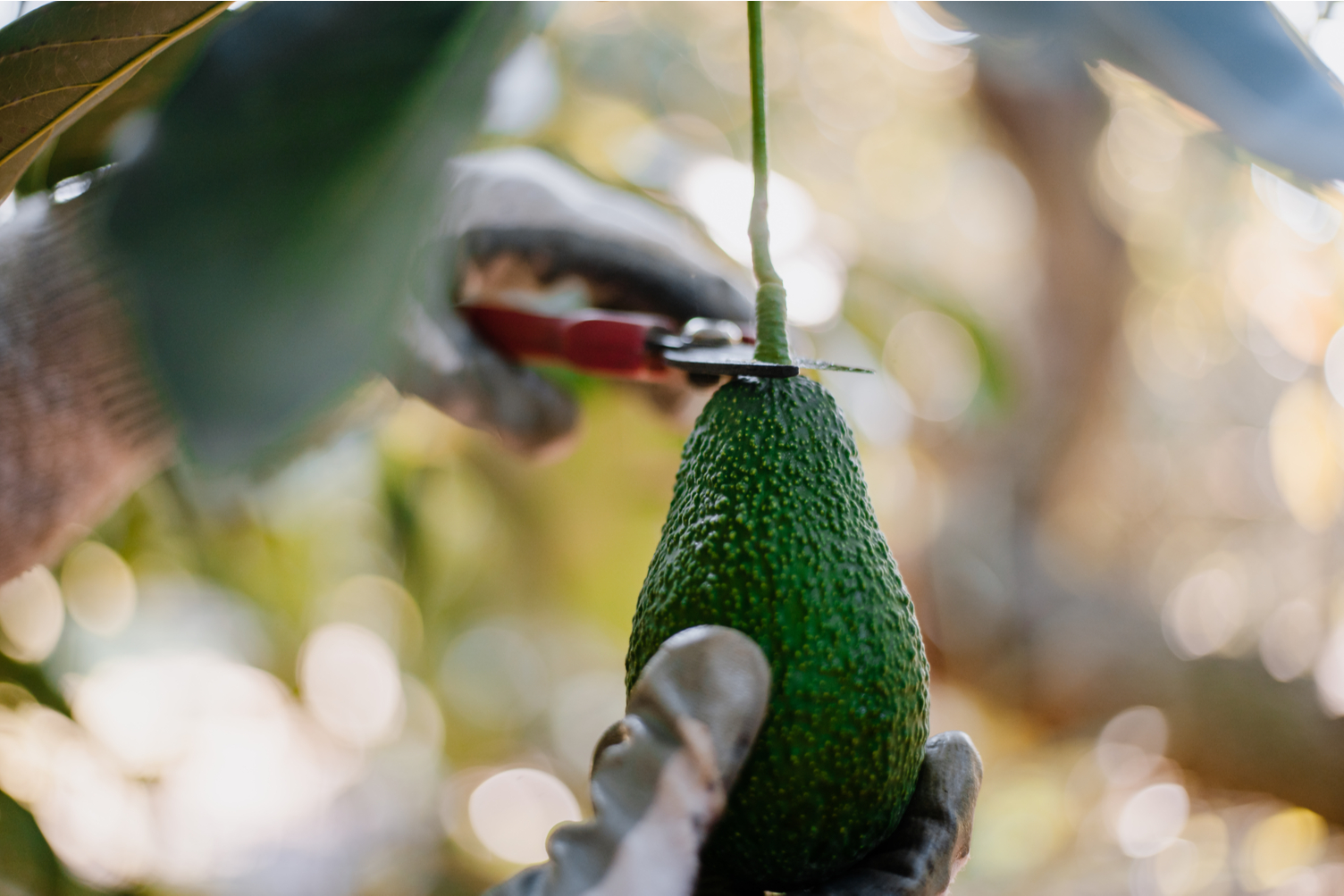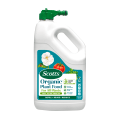

How to Grow an Avocado Tree
Avocado trees, once established, are very productive, beautiful evergreen trees that will supply you with plenty of fresh avos to smash, spread or simply scoop and enjoy!
While different areas of the country will require different approaches and growing guidelines, generally speaking, avocado trees can be grown in all sorts of different climates, from northern Tasmania to the tropics of Queensland - just look for a variety that’s best suited to your climate and growing conditions. In cooler regions, avocado trees will need to be sheltered and protected from the cold or frost, particularly as younger plants
Avocado tree types
There are two types of avocado trees - type A and type B. Type A avocado trees can be pollinated in the morning and release their pollen in the afternoon. Type B avocado trees release pollen in the morning and can be pollinated in the afternoon. When growing avocado trees, having a type A and type B plant will give you the best chances of pollination and a high fruit yield.
Type A: Haas, Pinkerton, Reed, Rincon, Wurtz
Type B: Bacon, Edranol, Fuerte
Of these varieties, Edranol does well in warmer climates, Pinkerton, Rincon and Wurtz are best for temperate zones, and Bacon is a great choice for colder climates.
If you’re going to grow your avocado tree in a pot, choose a dwarf variety.
Top 5 tips to growing avocado
- Grow avocados from a grafted tree, it will produce fruit 4-5 years after planting.
- Protect young trees from frosts. Mature trees are more frost tolerant. For maximum pollination grow an A and a B type avocado. Ask your local nursery or garden centre for varieties suited to your climate.
- Avocado trees need 6 to 8 hours of full sun per day. Make sure to plant avocado trees in a full sun position, protected from strong winds.
- Mature trees can reach 5-10 metres tall. Choose a dwarf variety that grows up to 4 metres if you are limited on space.
- Even mature trees can die if they sit in waterlogged soil for too long (as little as 48 hours!). Make sure that soil is high quality and well-draining.
If growing an avocado tree in pots:
- Dwarf avocado tree (or 2 different types to aid pollination)
- Scotts Osmocote® Compost Premium Soil Improver
- Scotts Osmocote® Controlled Release Fertiliser: Citrus & Fruit
- Pot – 50cm wide by 50cm deep
If growing avocados from a seed:
- Avocado pit
- Toothpicks
- Pot
- Jar or water glass
- Scotts Osmocote® Compost Premium Soil Improver
- Scotts Osmocote® Controlled Release Fertiliser: Citrus & Fruit
Growing avocado in the garden
- Pick a sunny, well-protected spot: Avocado trees need a full sun spot, that’s protected from strong winds. In cooler climates, they can be grown near a north-facing wall or structure, which will radiate warmth during the cold of winter.
- Prepare your soil: Plant your tree into moist, but well-drained soil, that’s been improved with plenty of organic matter. Avocado trees prefer a soil pH that’s slightly acidic to slightly alkaline. If your soil is heavy clay, prepare the planting hole by mixing through plenty of organic matter or Scotts Osmocote® Compost Premium Soil Improver and gypsum 4-6 weeks before planting.
- Plant: To improve drainage, plant your avocado tree on a raised mound.
- Water: Water regularly but don’t over-saturate. Even mature trees will die quickly if their soil is waterlogged for a day or two.
- Feed: Fertilise your avocado trees in spring and again in autumn with an organic-based fertiliser such as Scotts Osmocote® Controlled Release Fertiliser: Citrus & Fruit.
Growing avocado in pots
Some dwarf varieties of avocado are suitable for growing in large pots or planters. Choose a dwarf variety such as Dwarf Wurtz or Dwarf Pinkerton. To grow avocado in pots:
- Choose a pot: Just make sure you choose a pot or planter with plenty of drainage holes at least 50cm wide by 50cm deep.
- Pick a spot: Choose a sunny spot protected from the wind.
- Fill your pot with soil: Fill your pot or planter with Scotts Osmocote Premium Potting Mix ready for planting.
- Plant your tree: Position the tree in the hole and backfill the soil.
- Mulch: Lightly mulch the soil around the tree (avoid touching the trunk or graft point with the mulch) after planting with an open mulch to retain moisture.
- Water: Water well but don’t over-saturate.
- Fertilise: Feed with a controlled-release fertiliser in spring and autumn.
How to grow avocado from seed
You can grow avocado from seed or the pip inside the fruit. However, it could take up to 10 years before you get fruit from the tree - it may not even fruit at all. The best way to guarantee a harvest is to plant avocados from grafted trees.
Avocados grown from the pip can be fun to watch grow, however, and they make a great indoor water plant suspended over a glass with their roots in water.
Follow these simple steps to grow an avocado from seed:
- Remove and clean the pit: Carefully remove the pit from the avocado without cutting it and wash it to remove any leftover fruit.
- Find the bottom: The slightly flatter end is the bottom, and the pointier end is the top. The bottom of the pit is where the roots will grow from so it’s important to get this right.
- Poke the pip with toothpicks: Firmly wedge three or four toothpicks around the circumferences of the avocado – about halfway up the seed. The toothpicks will enable you to balance the avocado over a jar of water.
- Submerge the avocado pip: Place the avocado pip over a jar or glass filled with water. You want about half of the avocado to be submerged in the water. Remember to place the bottom of the pip in the water. Sprouts will grow from the top of the pip.
- Place somewhere sunny: Place the glass in a sunny spot and change the water regularly (every few days).
- Wait for the seed to sprout: Watch as the avocado pip dries out and cracks. Soon, a small root will start to emerge from the crack, and sprouts will shoot from the top. Make sure the roots are always submerged in water. Otherwise, the plant will die.
- Plant in soil: When the stem is about 15cm long, plant it in rich humus soil in a deep pot about 25cm in diameter. Leave the top half of the seed exposed.
- Water regularly: Keep the soil moist but not saturated. Keep the plant somewhere sunny.
- Pinch out: To encourage bushiness, pinch out the two top sets of leaves. This will cause it to branch out. When it’s grown back, again pinch out the top sets of new leaves.
Harvesting avocados
Avocados will not ripen until they’ve been picked from the tree. When you notice a fruit's natural sheen starts to dull a little, the fruit should be ready to pick. Harvest two to three fruit with this appearance, and pop them somewhere at room temperature inside for a week or two until they soften enough to eat. If they soften well and taste delicious you can begin to harvest the rest of the crop.

Common avocado pests and diseases
- Root rot is one of the most common killers of avocado trees. To prevent this, make sure the plant's roots are never soggy and the soil it’s planted into has good drainage.
- Queensland Fruit Flies can lay their eggs in the skin of young fruit. The eggs will hatch inside your avocados and the maggots will ruin the fruit causing it to drop off prematurely. Protect your crop using suitable Queensland Fruit Fly lures and baits plus install wildlife safe insect-proof netting pulled taught over the tree, once you can see the fruit has started to form.
Frequently asked questions about growing avocado trees
When do avocado trees fruit?
Avocado trees fruit at different times of the year depending on the climate and type of variety. For example, Hass fruits between September and January, Pinkerton between June and August, and Wurtz between October and December.
How big do avocado trees grow?
Avocado trees can grow between 5 and 10m tall.
Can you grow an avocado tree in a pot?
Yes, you can grow an avocado tree in a pot. Choose a dwarf variety and use a pot at least 50cm wide and 50cm deep.
How long for avocado trees to bear fruit?
Grafted trees can take between 4 and 5 years to bear fruit. An avocado tree grown from seed can take up to 10 years to fruit.
When to plant avocado seed in soil
If you’re growing an avocado tree from seed, it’s time to plant it in soil when the stem reaches about 15cm tall.
_0.jpg)




